For a change, this is going to be a short post!
We bought what we learnt from last weeks Spontaneous Attack session and shared it with the teams. It was challenging, but the kids stepped up to it, and did well. The toughest point was the (quite common rule for spontaneous problems) that if one team member is stuck, the whole team is stuck. We briefly discussed some strategies- like choosing a couple of favorite topics that you know really well, that you can answer almost any question about. We're going to discuss other strategies to try at next weeks session.
And then the two teams moved onto their long term problems. In the structure team, which I co-coach, we started by going over the problem again, particularly the scoring. The team discovered that there are a lot of points available for the style parts of the challenge. It got them thinking about the other parts of the challenge. Then the team decided that they wanted to start building! They used popsicle sticks to try some of their ideas; we all wanted to save our precious balsa wood. The scale might be wrong, but they're easy to work with to try out their design ideas.
One thing that proved really helpful for the structure team was a suggestion from a couple of the other coaches (Sarah and Gail- thanks!): create some sort of analogue of the volumes mentioned in the problem description, for the unfolded and folded states of the structure. I grabbed a box and chopped it up to create three, 3 sided, rectangular 'open' prisms. It really helped the team visualize the dimensions involved.
I only briefly saw our Goldberg team's machine, but from the little I saw I'm excited to see more next week!
Thanks this week to all the parent helpers who stayed- especially Neville, who sorted out my dis-organized story card, Gisela for organizing snacks, and Pam who helped judge some of the spontaneous challenge practices.
Gilmore Odyssey
A team of parents bringing the Odyssey of the Mind Challenge to Gilmore Elementary, Richmond, BC.
Saturday, February 19, 2011
Monday, February 14, 2011
Spontaneous Attack!
We had the pleasure of having four of our participants attend the Odyssey BC Spontaneous Attack session at South Slope School in Burnaby.
We were greeted by the friendly Odyssey BC volunteers, registered and the kids were moved to our first station, with Bruno as chaperone. Sarah, as part of the coach training, was taken to a station to be partnered with an experienced coach/judge and was put immediately to work running and judging an activity.
Our first station was, I think, a little surprising for our kids. It was more formal than anything we've yet to do in practice, with the 'judge' giving them a copy of the problem description, and then reading out the situation and rules. I was a little worried that the kids might be discouraged or overloaded given the stopwatch, the rules of turn-taking, and the complexity of the problem. I employed what I've been told over and over again: "coach- be quiet", took a deep breathe and watched.
They got it. The 'judge', an experienced coach, was very warm and engaging. She made suggestions, gave examples, and lots of encouragement. Everyone thanked the judge and moved onto the next of about four stations.
From this point on I only saw bits and pieces as I was on baby-watch duty, but Xavier and I did take a peak at all of the stations. There were situational scenarios (given a picture, "what might happen here?"), creative story telling, prop creation, and a structure problem (which looked to be a lot of fun.)
Each 'judge' gave constructive feedback both to the team and the coaches, which I'll try to summarize below:
Given that our participants are both first timers, and young, they did themselves very proud; at times it wasn't easy, but nobody gave up, and everyone listened to the feedback from the people running the stations.
At this point I'd like to say thanks to Bruno for driving and supervising the kids at and between the stations, and also to the wonderful Odyssey BC volunteers and organizers for putting together and running such a great session.
We were greeted by the friendly Odyssey BC volunteers, registered and the kids were moved to our first station, with Bruno as chaperone. Sarah, as part of the coach training, was taken to a station to be partnered with an experienced coach/judge and was put immediately to work running and judging an activity.
Our first station was, I think, a little surprising for our kids. It was more formal than anything we've yet to do in practice, with the 'judge' giving them a copy of the problem description, and then reading out the situation and rules. I was a little worried that the kids might be discouraged or overloaded given the stopwatch, the rules of turn-taking, and the complexity of the problem. I employed what I've been told over and over again: "coach- be quiet", took a deep breathe and watched.
They got it. The 'judge', an experienced coach, was very warm and engaging. She made suggestions, gave examples, and lots of encouragement. Everyone thanked the judge and moved onto the next of about four stations.
From this point on I only saw bits and pieces as I was on baby-watch duty, but Xavier and I did take a peak at all of the stations. There were situational scenarios (given a picture, "what might happen here?"), creative story telling, prop creation, and a structure problem (which looked to be a lot of fun.)
Each 'judge' gave constructive feedback both to the team and the coaches, which I'll try to summarize below:
- coaches can teach the teams strategies for these problems:
- get a book of spontaneous problems
- check out the Pennsylvania Odyssey web site
- get a book of spontaneous problems
- often very successful teams assign members roles such as: timer, reader, builder, coordinator, artist, rules checker/scorer
- during a problem, if needed, the team should figure out and assign any efficient divisions of labour; eg for a structure problem that has re-usable projectiles, assign a couple of people to quickly retrieve and return them to the 'launcher'. It may not be as much fun, but the team will generate more chances of getting higher scores.
- showing and encouraging team spirit and teamwork
- having a motto/chant
- encouraging talk to each other
- let every one take roles and turns
- work together; create one solution, rather than one per team member
- watch the rules
- having a motto/chant
- Prioritization: figure out the key point-scoring tasks, get these done first, then do the extras
- problems are often structured so that each team member must give an answer; if they get stuck, the whole team is stuck. So coach the kids to have two default answers to fall back to if they have a blank.
- listen carefully, and try not to fidget when problem descriptions are read out
- speak clearly, and with good volume when talking to judges and other officials
- if a team has more than five members, pre-decide who will be the five to do the challenge
- use thinking time and the time while others are having their turn to figure out your next answer
Given that our participants are both first timers, and young, they did themselves very proud; at times it wasn't easy, but nobody gave up, and everyone listened to the feedback from the people running the stations.
At this point I'd like to say thanks to Bruno for driving and supervising the kids at and between the stations, and also to the wonderful Odyssey BC volunteers and organizers for putting together and running such a great session.
Friday, February 11, 2011
Teams, Vehicles, Structures, Plays, and PAC Support
It's been a busy couple of weeks, with lots of good achievements- our thanks to all those that helped make them happen!
We had our first practice session, which was well attended both by kids and parents. We all played a couple of ice breaker games, and then we split off into two groups- kids, and parents.
Sarah and the helpers organized the children into two groups and set them their first challenge: build the tallest structure they could using only tooth picks and plastecine. Part of the challenge was a time limit.
At the same time Julian talked with the parents about Odyssey, and what the teams will need from their parents. Right away we had enough volunteers (many thanks to Neville, Pam, Sylvanus, Fion, Bruno, Chris, and anyone else I've forgotten to mention) step up to field a team; and kids for three.
Everyone then admired the structures, and the parents acting as judges gave feedback to the teams.
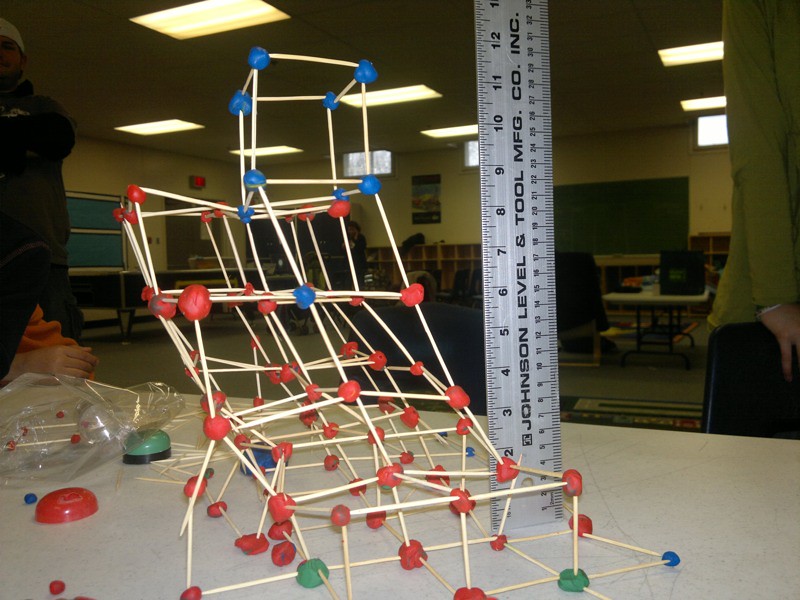
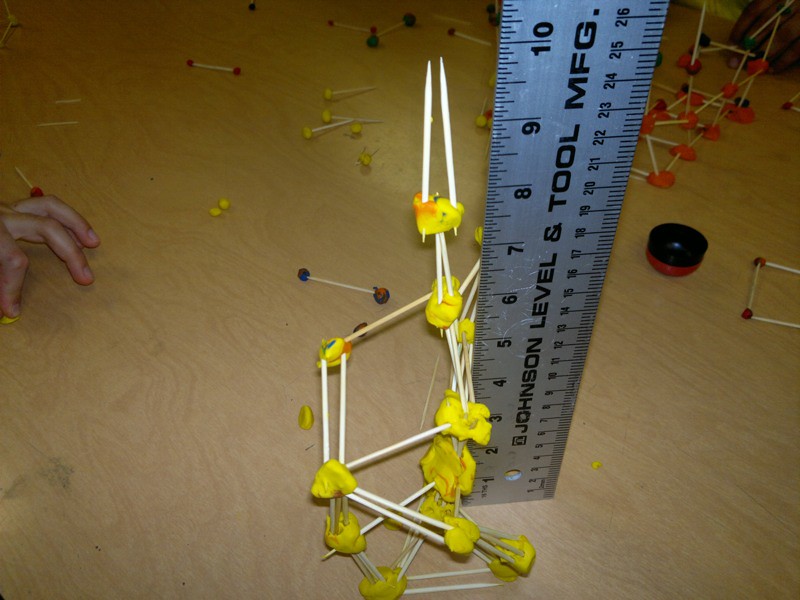
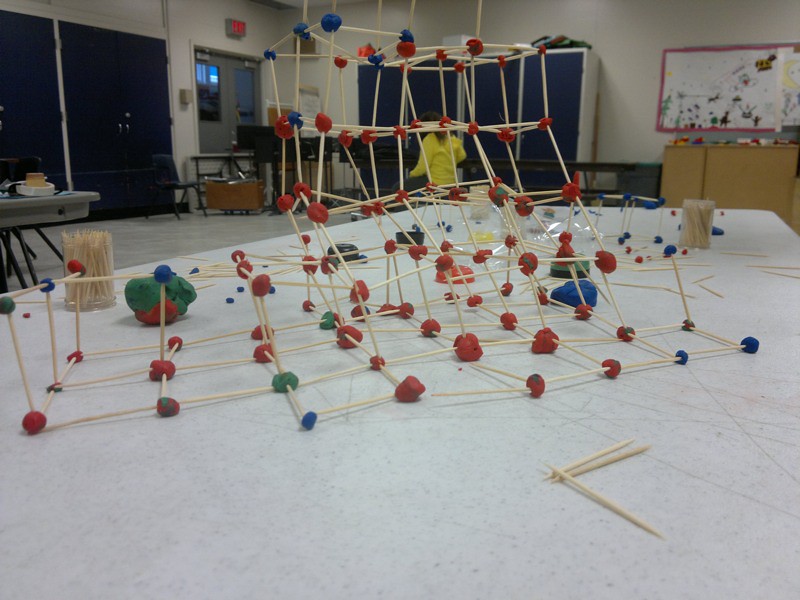
Then the second challenge: build a vehicle from straws, balloons, and tape that can
get from one side of the room to the other. Both teams tried different strategies, but the Mouse Express (my name) was the best performer.
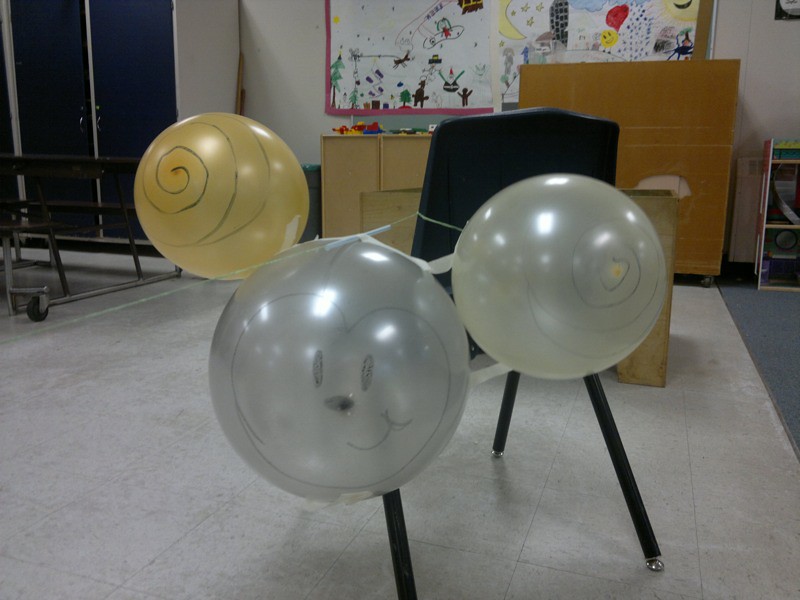
At the end of the day all the kids commented that teamwork is hard- especially when it comes to sharing ideas.
During the following days enough other volunteers (thanks Deborah, Constantin, and Gisela) came forward allowing us to field a second team. Sarah also presented Odyssey of the Mind to the PAC and asked for funding. Thanks to the other supportive parents present we were granted funding for both this year and next- which is great news!
Our next session had us arranging into potential teams and creating a play which had to use a random assortment of items. Partway through their preparation I was a little worried that this was too big a challenge for either team, but they did it! One team created a play about a Princess going for a walk to chop a tree that ends up jointing the towns band. The other, a dark tale of a young vampire rejecting her Father's feeding habits, and resuscitating one of his victims. They were both spellbinding; taking a bite out of some old jingles; full of cutting insight... ok enough of the puns!
The kids then choose two long term problems (the "Good as Gold...berg" and "Structure" challenges) and re-arranged themselves into teams around them.
And here is where I must draw this post to a close.
We had our first practice session, which was well attended both by kids and parents. We all played a couple of ice breaker games, and then we split off into two groups- kids, and parents.
Sarah and the helpers organized the children into two groups and set them their first challenge: build the tallest structure they could using only tooth picks and plastecine. Part of the challenge was a time limit.
At the same time Julian talked with the parents about Odyssey, and what the teams will need from their parents. Right away we had enough volunteers (many thanks to Neville, Pam, Sylvanus, Fion, Bruno, Chris, and anyone else I've forgotten to mention) step up to field a team; and kids for three.
Everyone then admired the structures, and the parents acting as judges gave feedback to the teams.



Then the second challenge: build a vehicle from straws, balloons, and tape that can
get from one side of the room to the other. Both teams tried different strategies, but the Mouse Express (my name) was the best performer.

At the end of the day all the kids commented that teamwork is hard- especially when it comes to sharing ideas.
During the following days enough other volunteers (thanks Deborah, Constantin, and Gisela) came forward allowing us to field a second team. Sarah also presented Odyssey of the Mind to the PAC and asked for funding. Thanks to the other supportive parents present we were granted funding for both this year and next- which is great news!
Our next session had us arranging into potential teams and creating a play which had to use a random assortment of items. Partway through their preparation I was a little worried that this was too big a challenge for either team, but they did it! One team created a play about a Princess going for a walk to chop a tree that ends up jointing the towns band. The other, a dark tale of a young vampire rejecting her Father's feeding habits, and resuscitating one of his victims. They were both spellbinding; taking a bite out of some old jingles; full of cutting insight... ok enough of the puns!
The kids then choose two long term problems (the "Good as Gold...berg" and "Structure" challenges) and re-arranged themselves into teams around them.
And here is where I must draw this post to a close.
Friday, January 14, 2011
Parent Awareness Session
We had a great session tonight at Gilmore, with 13 parents attending. Our presenter was Cheryl Atwater. Below are my rough notes from the session.
Notes from the Session
Cheryl commented that often adults jump in because it's faster, more than it's easy.
She said that one of the comments from a returning student in one of her teams to new team members was that it was great that the adults are assistants- and otherwise keep out.
In a nutshell:
- teams of 5-7 members
- broken into divisions
- all teams work on the same problems; just the output is different
Teams start in January, there is a 'Qualifying' round in March, then re-present in April. Then if a team wins, there is the option to go to the world final in the States. The qualifying round is not qualifying to go to the April contest, but a chance for teams to get feedback about their solution.
Q: Are practices once a week? Cheryl equated it to a soccer team- normally start with one practice per week, but as we get closer to tournaments, there are often more practices. There's no one way to do Odyssey.
Cheryl then showed us the following video about Odyssey of the Mind: http://www.odysseyofthemind.com/downloads/a_creative_experience.350.rm (Technical point: if you don't have, and don't want to install RealPlayer, you can use VLC to play it. In VLC go to file->open network location, and then paste the above address.)
Some of Cheryl's returning students said one of the highlights was - no adults!
Lee had some comments about judging (has been a judge for many years.) He has looked at numerous teams solving the same problems. The most difficult ones to judge have been the contraption type problems. Kids keep you very up and aware... so uplifting seeing kids solve problems. Seeing the kids solutions not working the way they thought it would, and seeing them working together to make it work. Seeing them really using their minds to solve these problems.
Note- the video mostly presents the long term problems- there is also a spontaneous problem. Cheryl did an example activity with parents: "What could this be?" (Cheryl handed around a pair of CDs taped together.)
Parents got a good taste for what a spontaneous problem can be.
Cheryl highlighted that such activities are good for breaking kids out of the idea of a "single correct answer" mentality that is often emphasized elsewhere.
And then Cheryl had the parents try a building problem- "battery boosters." The object was to create a structure that could hold batteries off the table surface. Several different solutions were created by the parents in attendance. A really great taste of what the kids experience in Odyssey. And here are the parent constructions:



Cheryl also told us a story of a parent at a similar meeting the previous day that was a firefighter. He had done similar problem solving exercises in his training because if all houses were the same it'd be easy. But they're not, so this kind of problem solving is essential for real world situations.
Thursday, January 13, 2011
Small Wiki Updates
For both personal preparation and also for tonights meeting, I've added some summary information about some of the roles to the wiki. All based on the great handouts from the CPSS coaches training session I attended late last year.
Friday, January 7, 2011
Welcome
Welcome to the inaugural blog post for the Gilmore Elementary Odyssey of the Mind team!
We're still getting organized and started, but here are some things that we've got ready for you:
We’d like to invite you to an informative session about Odyssey of the Mind with Cheryl Atwater, Odyssey of the Mind BC Association Co-Director, on Thursday 13th, from 6:45pm-8:30pm, especially if your child has returned a sign up form, in the Multi-function room. Cheryl is largely responsible for bringing this challenge programme to BC, and is a teacher at a district Challenge Centre for gifted learners in Coquitlam. Note: children are welcome, but childcare will not be provided.
What is Odyssey of the Mind? It’s a completely “kid done” activity with interesting challenges: from writing the script for a play, to building a contraption, to making a costume and designing props! The students have to think of solutions and create and design using ONLY their own ideas and skills. See http://www.odysseybc.ca/ for more information.
We’d like to bring this extra-curricular activity to Gilmore, but need your help. Please do attend if you’re interested, and especially if you may be able to help. And if you have any questions, please feel free email gilmore.odyssey@gmail.com. Look forward to seeing you next Thursday!
We're still getting organized and started, but here are some things that we've got ready for you:
- a wiki
- a Flickr photostream
- this blog
- a Google calendar (email us for access)
And an introductory session on the 14th of January (2011) with Cheryl Atwater, Co-Director of the Odyssey of the Mind BC Association; I'll copy the text of the handout that went to students below.
Cheers-
Julian
Odyssey of the Mind - Encouraging Creativity and Confidence
Dear Gilmore Community-We’d like to invite you to an informative session about Odyssey of the Mind with Cheryl Atwater, Odyssey of the Mind BC Association Co-Director, on Thursday 13th, from 6:45pm-8:30pm, especially if your child has returned a sign up form, in the Multi-function room. Cheryl is largely responsible for bringing this challenge programme to BC, and is a teacher at a district Challenge Centre for gifted learners in Coquitlam. Note: children are welcome, but childcare will not be provided.
What is Odyssey of the Mind? It’s a completely “kid done” activity with interesting challenges: from writing the script for a play, to building a contraption, to making a costume and designing props! The students have to think of solutions and create and design using ONLY their own ideas and skills. See http://www.odysseybc.ca/ for more information.
We’d like to bring this extra-curricular activity to Gilmore, but need your help. Please do attend if you’re interested, and especially if you may be able to help. And if you have any questions, please feel free email gilmore.odyssey@gmail.com. Look forward to seeing you next Thursday!
Sunday, December 31, 2000
Forgetful Writer, and Plans
Hint to anyone thinking of writing a blog like this: don't make mental notes about posts; you'll mix things up and forget them; which is the case I'm in right now :)
I just wanted to post a great activity that Deborah did with the teams.
You'll need to split the kids up into groups, for example their Odyssey teams.
Then you will need:
- One hoop (or movable 'base') per group, plus one extra
- about twenty beanbags or similar
Place the hoops widely spaced in the room, and then the extra hoop ('base') in the middle.
All the bean bags go in the central hoop.
Now tell the teams to go to their 'base' and get all the bean bags to one base.
Mayhem ensues, and after a few minutes stop the kids and ask them how it's going. Give them a few minutes to think about and comment about their experience. Then set them going again.
This is one of those 'no one right way' to solve it problems- but solutions do exist. Our kids came up with at least three- after a few attempts!
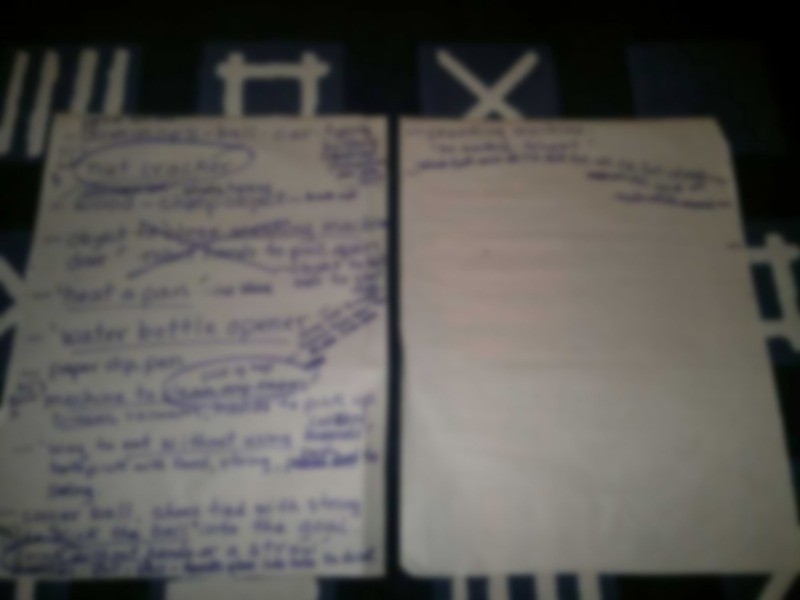

Thanks Deborah for this great activity- which highlighted one of the things the kids find hardest: Teamwork- especially when it comes to collaborating on creative ideas. I'm starting to realize that an implicit part of the teamwork process is a certain amount of disappointment, especially when your idea isn't used (or only parts of it are used.) It takes a while for the process to reach the point of synergy where the final result is more than the inputs and individual ideas. I good lesson for me and the kids!
Talking of teamwork, both teams did a great job of brainstorming for their long-term problems. I've added a couple of snapshots of their notes- purposely blurred to keep their ideas top secret.
I just wanted to post a great activity that Deborah did with the teams.
You'll need to split the kids up into groups, for example their Odyssey teams.
Then you will need:
- One hoop (or movable 'base') per group, plus one extra
- about twenty beanbags or similar
Place the hoops widely spaced in the room, and then the extra hoop ('base') in the middle.
All the bean bags go in the central hoop.
Now tell the teams to go to their 'base' and get all the bean bags to one base.
Mayhem ensues, and after a few minutes stop the kids and ask them how it's going. Give them a few minutes to think about and comment about their experience. Then set them going again.
This is one of those 'no one right way' to solve it problems- but solutions do exist. Our kids came up with at least three- after a few attempts!


Thanks Deborah for this great activity- which highlighted one of the things the kids find hardest: Teamwork- especially when it comes to collaborating on creative ideas. I'm starting to realize that an implicit part of the teamwork process is a certain amount of disappointment, especially when your idea isn't used (or only parts of it are used.) It takes a while for the process to reach the point of synergy where the final result is more than the inputs and individual ideas. I good lesson for me and the kids!
Talking of teamwork, both teams did a great job of brainstorming for their long-term problems. I've added a couple of snapshots of their notes- purposely blurred to keep their ideas top secret.
Subscribe to:
Posts (Atom)



